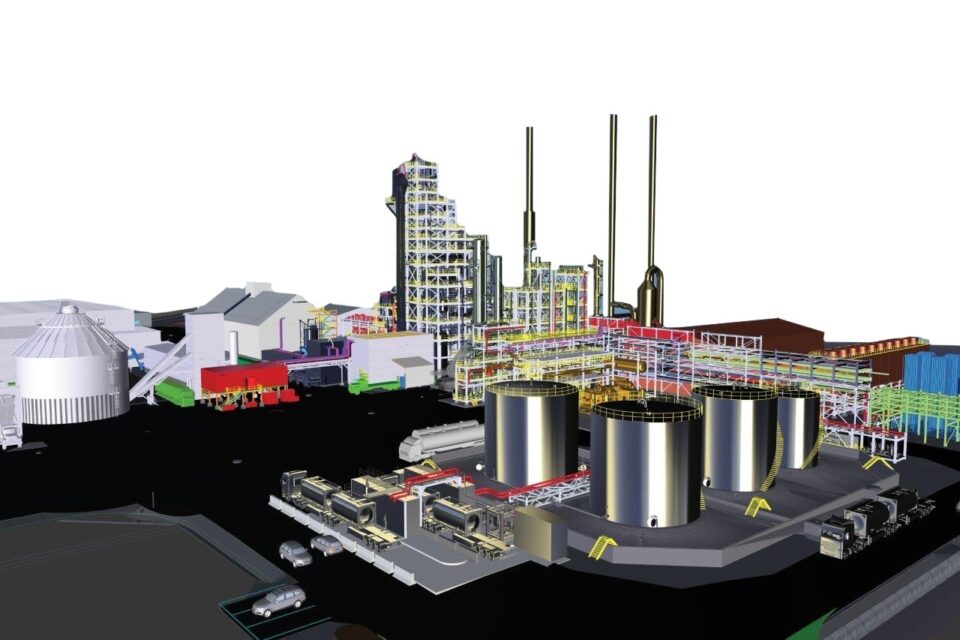In Conversation with Toby Heaps, Chief Executive Officer and co-founder of Corporate Knights
University OF Toronto Land Capture Study
A Canada Infrastructure Bank funded study by the University of Toronto’s Infrastructure Institute has found that land value capture that allows governments to reclaim a portion of increases in land value due to public investment can be a valuable tool to fund costly capital costs and infrastructure essential for transit. Land value capture (LVC) involves imposing fees, charges and levies on landowners to reinvest for community benefit. Report authors Matti Siemiatycki, Drew Fagan and Robert Nutifafa Arku say innovative and strategic solutions are required at a time when Canada needs to build more infrastructure, but municipalities are challenged by significant fiscal uncertainty. While LVC is underused in Canada, they say public agencies and impact investors can use it to accelerate infrastructure and enhance the public interest. Collaboration among transit agencies, municipalities, developers and public investors like the CIB will be critical to making the most of this financing tool, the report says. The paper identifies how the CIB could play a key role in sharing risk and leveraging private capital to expand LVC. CIB chief executive officer Ehren Cory says the bank is helping to develop Canada’s next generation of infrastructure and has targeted investing $5 billion towards accelerating public transit infrastructure across the country.
BUDGET 2023
The federal government’s 2023 budget proposed to significantly accelerate investments in the supply and transmission of clean electricity by expanding Canada’s electricity grid. In addition to investment tax credits and targeted electricity programs, the budget pointed to the Canada Infrastructure Bank (CIB) providing more low-cost financing to enhance partnerships between governments and the private sector. The budget will position the CIB to play a leading role in electrifying Canada’s economy, supporting lower energy bills and ensuring that cleaner, affordable electricity is available from coast-to-coast-to-coast. The CIB is an active partner through investments in renewable energy, energy storage and transmission projects. The budget called on the CIB to invest a total of at least $20 billion through its clean power and green infrastructure sectors. It also allows the CIB to provide loans to Indigenous communities to support them in purchasing equity stakes in infrastructure projects in which the Bank is also investing.
BUDGET 2022
Last year’s federal budget called on the Canada Infrastructure Bank to step up its investments by adding several new mandates that broadened its role in accelerating the country’s transition to a low-carbon economy. This included allowing the CIB to invest in small modular reactors, clean fuel production, hydrogen production, transportation and distribution, and carbon capture, utilization and storage. It also authorized the CIB to invest $500 million in large-scale urban and commercial ZEV charging and refuelling infrastructure to help accelerate the adoption of ZEVs and reduce Canada’s transportation emissions. Within months of the budget announcement, the CIB agreed to invest $970 million in the preliminary stages of the Darlington small modular reactor and $277 million towards a biofuel refinery with Canada’s largest hydrolyzer in Varennes, Québec. It also developed the framework for a charging initiative and announced a $220 million investment in FLO’s move to expand its charging network in all 10 provinces. The CIB is also working to finalize investments in carbon capture and hydrogen production.
COMMUNITY OF CIB:
Meet Carrie Hotton-MacDonald
In my role at Edmonton Transit Service, I oversee bus, light rail (LRT), paratransit and on-demand services. Alongside my dedicated team, I provide strategic direction to implement long-term transit plans in support of Edmonton’s City Plan and Climate Adaptation and Energy Transition plans.
To lower greenhouse gas emissions, we are transitioning our bus fleet away from diesel vehicles and towards zero-emission buses (ZEBs). Although electric buses result in significant cost savings through lifetime fuelling and maintenance costs, they have higher upfront costs which can deter municipalities from making the switch. Through the CIB’s financing, we were able to address this barrier head-on.
The CIB’s investment accelerated our purchase of 20 ZEBs and expanded our fleet to a total of 60 electric buses. With all ‘CIB buses’ now on our roads, we are already progressing towards our climate goals and offering Edmontonians a cleaner, quieter and more comfortable ride.
As a leader in transit electrification, I’m grateful we could partner with the CIB. They have successfully enabled the purchase of zero-emission vehicles in communities across Canada and directly supported a more sustainable transit network in Edmonton.
Outcomes and Key Metrics
PARTNERSHIPS


- Green Infrastructure
Noventa Energy Retrofits
- Reducing emissions from buildings by 30%
- Upgrading buildings to low-carbon heating and cooling systems
- Retrofits are critical to meeting climate goals
- Reducing emissions from buildings by 30%
- Upgrading buildings to low-carbon heating and cooling systems
- Retrofits are critical to meeting climate goals


- Green Infrastructure
Varennes Carbon Recycling
- One of the world's first large-scale biorefinery coupled with an electrolyzer producing biofuels and circular chemicals
- Supports new industry key to Canada's aim to be emission neutral by 2050
- Reduces emissions by more than 175,000 tonnes annually
- Creates 500 construction jobs and about 100 permanent jobs during operations
- One of the world's first large-scale biorefinery coupled with an electrolyzer producing biofuels and circular chemicals
- Supports new industry key to Canada's aim to be emission neutral by 2050
- Reduces emissions by more than 175,000 tonnes annually
- Creates 500 construction jobs and about 100 permanent jobs during operations


- Green Infrastructure
- Indigenous Infrastructure
Grasswood Urban Reserve Wastewater Treatment Facility
- Indigenous-owned and operated with contracted operations and maintenance support from Saskwater Corporation
- Advances the reserve's and nearby municipality's transition away from septic wastewater systems
- Reduces adverse environmental impacts and supports sustainable growth
- Indigenous-owned and operated with contracted operations and maintenance support from Saskwater Corporation
- Advances the reserve's and nearby municipality's transition away from septic wastewater systems
- Reduces adverse environmental impacts and supports sustainable growth


- Clean Power
Bekevar Wind Power
- Partnership with Cowessess First Nation ensures economic participation
- Critical clean energy infrastructure serving 100,000 homes
- Reducing GHG emissions by approximately 130,000 tonnes per year
- Generating 200 megawatts of zero-emission power to the local grid
- Partnership with Cowessess First Nation ensures economic participation
- Critical clean energy infrastructure serving 100,000 homes
- Reducing GHG emissions by approximately 130,000 tonnes per year
- Generating 200 megawatts of zero-emission power to the local grid
Do you have infrastructure projects that we can help to accelerate?
CONTACT US
Investment proposals: investments@cib-bic.ca
Corporate: contact@cib-bic.ca
Media: media@cib-bic.ca











